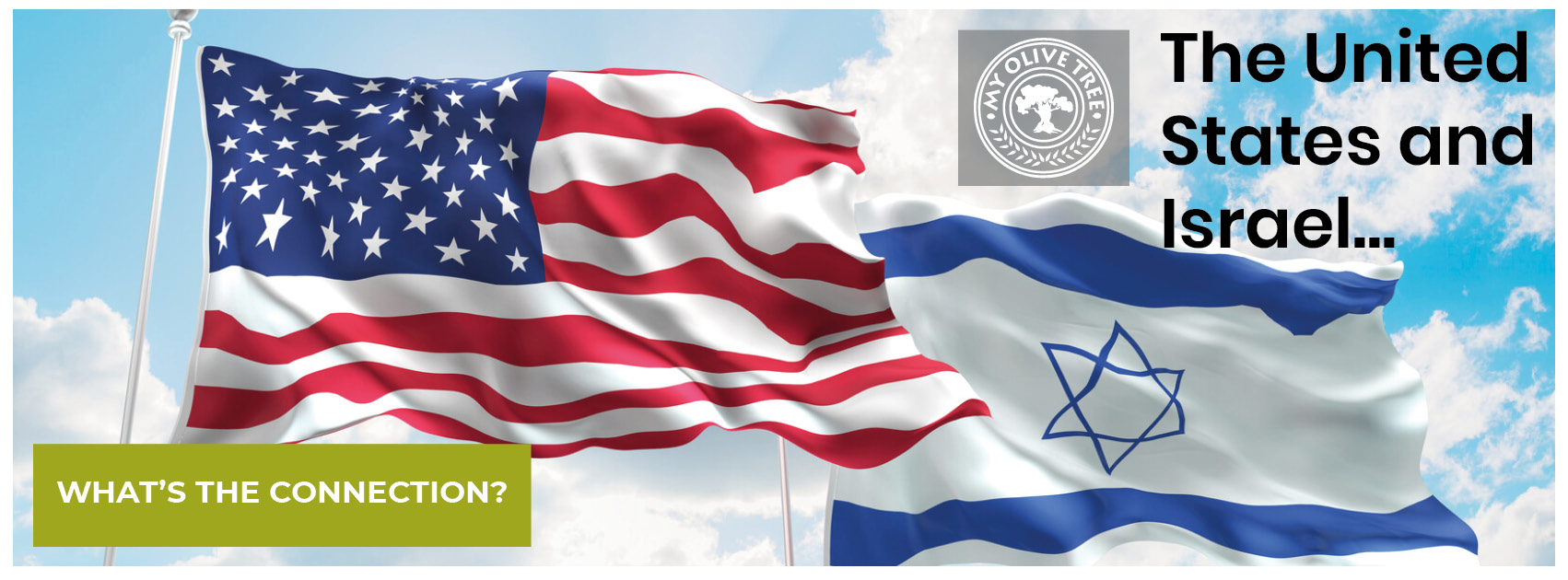According to the United States Department of State, only six United States presidents have visited Israel—the most recent being President Donald Trump. Our countries have enjoyed a strong partnership for more than 70 years, and each president who has visited Israel has had a major impact, not just on our relationship, but on the world.
Richard Nixon | Setting the Stage
The early 1970s were a tumultuous time for Israel, which was up against a coalition of Arab countries that intended to destroy the Jewish state once and for all. When Egypt launched a surprise attack on the holy day of Yom Kippur in 1973, the Israelis bravely fought but were quickly running low on supplies.
In this time of crisis, President Nixon and the United States responded. The United States airlifted munition and supplies that would ultimately give Israel just what it needed to fend off its foes and secure its borders.
Read more about the Yom Kippur War here!
Nixon then became the first president to visit Israel in 1974. He met with Israeli Prime Minister Yitzhak Rabin to discuss the continued partnership between the two nations, as well as how to create a lasting peace in the region.
Before this visit, the United States was primarily concerned about the Soviet threat, which had been supporting Arab nations against Israel. They saw the destruction of Israel as a Soviet victory.
Because of this meeting with Israel, the United States shifted its focus. The nation became concerned with helping Israel for more than just strategic reasons. The U.S. became interested in partnering with Israel to spread liberty and justice for all.
Jimmy Carter | Setting Sights on Stability
Following the Yom Kippur War of 1973, Egypt and Syria had signed a cease-fire treaty with Israel, but the United States wanted to see a lasting end to the fighting.
Since the collapse of the Ottoman Empire in 1918, the entire world had been struggling to restore stability in the Middle East. And the United States of America was up for the task.
President Jimmy Carter worked alongside his secretary of state, Cyrus Vance, to meet individually with all of the leaders in the Middle East. Their mission was to…
- Encourage the Arab nations to acknowledge Israel’s right to exist in peace
- Ensure the city of Jerusalem would no longer be divided
Carter was able to make remarkable progress. The Egyptian leader, Anwan Sadat, faced immense pressure from the Arab League, which saw peace talks with Israel as a sign of betrayal. But American leaders were able to convince him to act in the best interest of his people, of the region, and for peace.
When Egypt and Israel finally signed the Israeli-Egyptian Treaty in 1979, relations between the former enemies normalized. They exchanged ambassadors, began to trade, and coexisted in peace.
The United Nations had failed to create peace between Israel and its neighbors time and time again, but President Carter proved that under the leadership of the United States, peace could be made even between the most bitter of enemies. And that set a precedent for future American leaders.
President Clinton | Paying Respects
President Bill Clinton visited Israel 4 times throughout his presidency:
- 1998—to meet with Prime Minister Benjamin Netanyahu to discuss American-Israeli partnerships
- 1996—to honor victims of terrorist attacks
- 1995—to pay his respects to late Prime Minister Yitzhak Rabin
- 1994—to facilitate peace talks between Israel and Jordan
While the neighboring nations had not been at war for some time, tensions were building over a scarce commodity in the desert—water. The Jordan and Yarmouk rivers run between both countries and were being overdrawn.
President Clinton brought leaders from both sides together to accomplish the Israeli-Jordanian agreement of 1994. Essentially, the agreement outlines how both countries would share water—and it has not only kept the peace but also allowed the rivers to begin recovering!
Israel has always been eager to cooperate and share with its neighbors, but diplomatic tensions and especially pressure from Arab League nations and Soviet Russia have made peace negotiations difficult for leaders on both sides to cooperate.
Fortunately, as Israel’s economy grows in strength and stability, a shift continues to be made.
George W. Bush | Saying It Best
The alliance between our governments is unbreakable, yet the source of our friendship runs deeper than any treaty. It is grounded in the shared spirit of our people, the bonds of the Book, the ties of the soul. When William Bradford stepped off the Mayflower in 1620, he quoted the words of Jeremiah: ‘Come let us declare in Zion the word of God.’”—President Bush addressing the Israeli Knesset in May 2008
President George W. Bush visited Israel twice during his two terms as commander in chief. When he first came in January of 2008, his objective was to monitor the peace between Israel and Palestine.
President Bush sat down with Israeli Prime Minister Ehud Olmert and Palestine Authority President Mahmoud Abbas. They had a successful meeting in that all 3 leaders agreed to work toward peace and a final agreement status was in order… but the problem, as told by President Bush, was that Palestine’s Hamas-led government was making these negotiations impossible because, despite Olmert’s best efforts to work towards peace, they still refused to recognize Israel’s right to exist.
President Bush stayed firm with Palestine and set a precedent that the United States would stay loyal to Israel… That the U.S. would not concede to spiteful groups interested in war rather than peace. Above all else, President Bush’s message to the world was loud and clear: The United States recognizes that Israel has the right to exist, and we are ready to defend that right!
Barack Obama | Wishing the Best for Israel
President Obama also visited Israel twice—first to visit with Prime Minister Netanyahu and then-president Shimon Peres in 2013, and then in 2016 to attend the state funeral of Shimon Peres.
President Obama’s visits to Israel were intended to show appreciation for the Jewish state and Jewish culture. He spoke highly of Israel’s mission for peace.
Behind the scenes, President Obama also helped Israel by increasing their budget for defense aid. He was also praised for developing more close cooperation between American and Israeli military and intelligence agencies.
Though there was a mutual respect between President Obama and Prime Minister Netanyahu, and though they all wanted peace, there were disagreements as to how to achieve that.
Netanyahu ultimately hoped that Obama would have taken more immediate action and demonstrate a stronger stance for Israel. Israel appreciated Obama’s intentions, along with his gestures, praise, and respect for Jewish people and culture. He actively campaigned in the Middle East for peace and spoke out against anti-Semitism.
In the end, Obama took some steps in the right direction, but many believe he could have done much more to help Israel.
Donald Trump | Moving the Embassy
When President Donald Trump visited Israel in May of 2017, he became the first sitting president to visit Jerusalem’s Old City. His first stop was the Church of the Holy Sepulcher, and then he moved on to visit the Western Wall.
Other U.S. Presidents have visited the Old City, but not while holding office, so as to avoid the controversy that has surrounded Jerusalem for so long. Before President Trump officially recognized Jerusalem as the undivided capital of Israel, the United States and most other countries kept their embassies in Tel Aviv, and Jerusalem was split between Israel and Palestine authority.
But Israel had been the de facto ruler of Jerusalem since 1967, when the city was taken over during the Six-Day War.
President Trump changed that when he moved the American embassy to Jerusalem, in recognition that it was Israel’s undivided capital once and for all. Shortly thereafter, the Evangelical-led country of Guatemala moved its embassy, and other countries—most notably Romania and Australia—are considering moving their embassies as well.
The rest of President Trump’s legacy is still unwritten, but this move has already fulfilled one of America’s key objectives that dates back to Carter’s presidency. With Jerusalem recognized as Israel’s capital once and for all, we can finally start to see restoration and peace on the horizon.
President Bush offered Palestine a choice as to how they wanted to work toward a final agreement, and they chose to make cooperation difficult, hoping it would deter American involvement. But with strong leaders, we take a stand for Israel. And we don’t back down.








